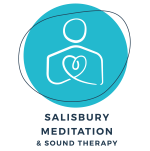Recent research indicates that imbalances in the autonomic nervous system (ANS) that are typical of stress-related migraines and tension headaches can be alleviated by practising mindfulness meditation.
Both tension headaches and migraines are unfortunately common and both conditions can be quite debilitating. For people who suffer from either one of them, the only comfort they seek is to finally be free from pain.
 |
Headaches and stress
Many people who suffer from migraines or tension headaches might be incapable of quickly and effectively recovering from a stressful event, which causes or aggravates those painful conditions.
Recent research shows that mindfulness meditation can be a powerful tool to promote and increase an effective recovery after a stressful event, thus preventing or alleviating migraines and tension headaches that would be or were caused by such events.
Meditation for migraine prevention
Such practices as mindfulness, yoga, and other mind-body techniques are being touted as powerful players in pain management, and a growing body of research suggests that a regular meditation practice may help prevent certain migraine triggers and even cause beneficial physical changes in the brain.
If you’ve never meditated before, you may find the idea of sitting still for a prolonged period of time daunting – and it can be difficult in the beginning to learn how to turn off your thoughts and simply just be. But there are many different meditation techniques, so you may find that there’s at least one you can master and even enjoy, especially if it helps you deal with migraine pain.

How it helps
Several studies reveal how a regular meditation practice may be effective for dealing with migraine headaches. Whereas stress can take a physical toll on the body, meditation can reduce the likelihood that stress or tension held in the body will trigger a migraine attack. There are a number of ways meditation can positively impact the body as well as the mind.
Stress Management
Tension, stress, and anxiety are common migraine triggers. Meditation may help to alleviate these by inhibiting the part of the nervous system that is responsible for them. Research has also found that meditation can increase heart rate variability, which may lead to improved cardiovascular health, better sleep quality, and greater physiological resilience to stress.
Brain Growth
Studies show that people who experience chronic migraines may have reduced grey matter – the neural tissue of the brain that processes information and that this may be a result of frequent migraines. Areas of the brain most affected by this are those involved in emotion, perception, memory, and decision-making, along with some functions involved in self-regulation, working memory, and problem-solving.
A number of studies have found that meditation can increase grey matter volume in certain parts of the brain.

Improving/Balancing Levels of Neurotransmitters
For many people, brain chemical imbalances and poor sleep are key players in migraines. Meditation has been found to have positive effects on several important neurotransmitters.
Specifically, some studies have found that meditation can increase dopamine (involved in the regulation of attention and reward), melatonin (the body’s sleep-wake regulator), and serotonin (involved in influencing mood and other functions). It can also decrease the “fight or flight” chemicals cortisol and norepinephrine.
Pain Relief
Meditation has been looked at specifically to determine its effects on migraine pain. In one small but significant study, 10 people with episodic migraines (fewer than 15 per month) participated in a standardised, eight-week meditation practice called mindfulness-based stress reduction (MBSR). They were compared to a group of nine subjects who followed their usual care for episodic migraine.
The people who did MBSR had headaches less often and also experienced positive changes in “headache severity, duration, self‐efficacy, perceived stress, migraine‐related disability/impact, anxiety, depression, mindfulness, and quality of life,” the researchers reported.
Increases oxygen
As we take time to slow and deepen our breath during meditation, we are increasing the amount of oxygen coming into our bodies. This is essential for our overall health, but if you are feeling headachy, people often find that if they get outside into the fresh air and breathe they start to feel better.
So next time you have a headache stop and take a couple of minutes to breathe in deeply (ideally through your nose) and deeply breathe out.

Improved Sleep
A sleep meditation before bed more of than not leads to more REM sleep (when your body heals and recovers), which is better quality sleep. A lack of sleep or disruptions and wakefulness can be a trigger for headaches and migraines. A bedtime meditation can also help you wind down and relax to put the day behind you.
Posture
There is quite often a link between headaches and tension / position of the neck and shoulders. Different meditations can focus on relaxing tension in muscles like those in the neck and shoulders, which may reduce symptoms of headaches and propensity of getting them.
How to use mindfulness meditation for headache pain management
But how do you know if this works for you? You have to experiment yourself — there’s no other way:
- Pain Diary. Have some sort of headache pain diary, in which you can track, among other things: a) pain level or intensity; b) frequency; c) duration; and d) any other associated symptoms (such as photophobia, nausea, vertigo, tingling behind the eye, tinnitus, etc). This will establish the base level for your pain. It is important to log for at least a couple of weeks before moving onto step #2, so you can measure the “before”. You can use a notebook or one of the many apps that are available for this.
- Mindfulness meditation: Learn and practice some basic mindfulness meditation technique. It is important not to be discouraged by misconceptions, as there are many myths about meditation.
- Track and log. Start logging in your diary when you meditate, for how long and perhaps jot some quick notes regarding how you felt before and after the practice.
- Analyse. After you have enough data, compare the results to see if your migraines and tension headaches were reduced in any way (considering all those dimensions: pain level or intensity, frequency, duration and any other associated symptoms) by the regular practice of mindfulness meditation.
- Rinse and repeat until you are satisfied with your conclusions.

Sources: https://medium.com/@hermitage/how-mindfulness-meditation-can-help-tame-migraines-and-tension-headaches-2312c425609d & https://www.verywellhealth.com/meditation-for-migraine-prevention-4101391


Recent Comments